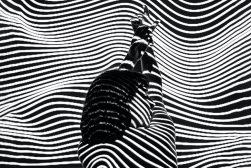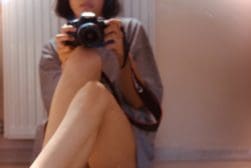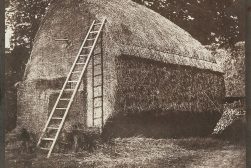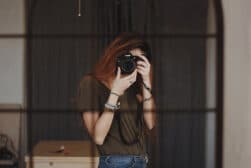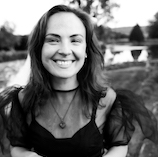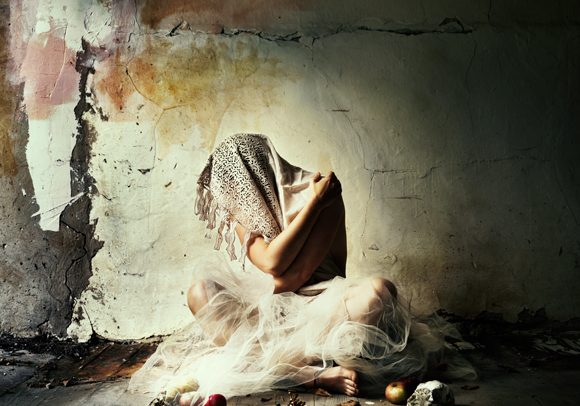
Exploring Self-Portraiture: History & Where To Find Inspiration
Dig into the roots of self-portrait photography to find out what the art form is about, who to get inspired by, and how to kick off your journey.
For a very long time in my life (we’re talking over three decades), I searched and searched for some creative outlet that didn’t feel like a chore, that made my blood all fuzzy, and most importantly, felt like me in a deliciously passionate way.
I tried everything from drawing through sculpting to writing, but only when I came across a book by Miss Aniela did I become aware of the conceptual self-portrait genre.
Having picked up the book and looked through its pages in my local art college’s library, I immediately had goosebumps.
I never knew this form of art existed.
It promised creativity, artistry, self-expression, theatrics, connection with others but the ability to work alone… perfection!
The library bookshelves held no more books on self-portrait photography at the time, so I started searching online, eager to learn more about the medium and its artists.
I will share some of my findings here to save you the trouble of hunting and help you unfurl the joys and mysteries of creative self-portrait photography.
Early Pioneers of Self-Portrait Photography
In the article Beyond the Selfie: Elevating Self-Portraiture in Photography, I briefly mentioned two of the first recorded self-portrait photographers: Robert Cornelius, and The Grand Duchess, Anastasia Nikolaevna (a teenager at the time).
In 1839, Cornelius set up his customised camera at the back of their family store in Philadelphia, removed the lens cap – the lens fashioned from an opera glass – and then sat for 10-15 minutes as still as possible to take his own picture.
On the back of the photograph, he wrote: “The first light picture ever taken. 1839”.
(Read more about who invented photography.)
Luckily, we now have wireless remotes and apps on our phones, so we don’t have to run back and forth anymore, nor do we have to sit for ages completely still for a sharp picture.
Thank you advanced technology!
Still, wouldn’t you just love to be the first to do something different and significant for the future, like Robert did? I know I would!
Instead, I remain grateful to him and everyone else who came before you and me, for paving the way for us.
Another pioneer for example is Hippolyte Bayard, a French photographer and inventor, whom I have to admit not having heard of until I started researching for this article.
He not only developed his own method of producing photographs, called the direct positive process, but more importantly for us, created a self-portrait in 1840 titled Self Portrait as a Drowned Man.

Hippolyte Bayard, Drowned Man 1840
This one is particularly interesting because it’s a theatrical image, where Hippolyte pretends to have drowned; an act symbolising his devastation over another inventor (Louis Daguerre) being credited for the invention of photography instead of him.
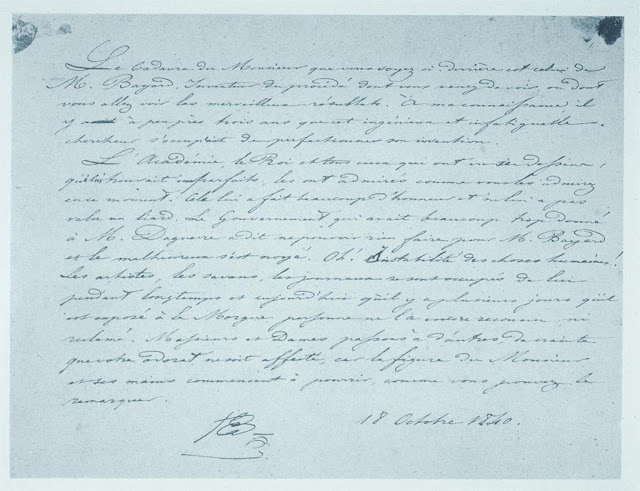
Bayard’s letter accompanying the photograph via Vintage News Daily.
“The corpse which you see here is that of M. Bayard, inventor of the process that has just been shown to you, or the wonderful results of which you will soon see. As far as I know, this inventive and indefatigable experimenter has been occupied for about three years with the perfection of his discovery. The Academy, the King, and all those who have seen his pictures admired them as you do at this very moment, although he himself considers them still imperfect. This has brought him much honour but not a single soul. The government, which has supported M. Daguerre more than is necessary, declared itself unable to do anything for M. Bayard, and the unhappy man threw himself into the water in despair. Oh, human fickleness! For a long time, artists, scientists, and the press took interest in him, but now that he has been lying in the morgue for days, no-one has recognized him or claimed him! Ladies and gentlemen, let’s talk of something else so that your sense of smell is not upset, for as you have probably noticed, the face and hands have already started to decompose.”
Talk about expressing your feelings through self-portraiture!
How Much Do You REALLY Know About Photography?! 🤔
Test your photography knowledge with this quick quiz!
See how much you really know about photography...

20th-Century Self-Portraiture
Two significant artists in the genre whose names are mentioned all the time are Francesca Woodman and Cindy Sherman.
And for good reason.
Both women created bodies of work that have subsequently influenced and inspired countless photographers.
If you wanted to explore your own identity and mortality through courageous vulnerability, I would recommend studying Francesca Woodman’s work, whose self-portraiture was all that, but also deeply personal and haunting.
In her case, she experimented a lot with lighting, exposure, and nudity.
If you wanted to play along these lines, try soft, natural light (a north-facing window is always a good option), and long exposures to create a dreamlike atmosphere.
Posing was also important to Francesca to express intimacy, especially with her nude photographs.
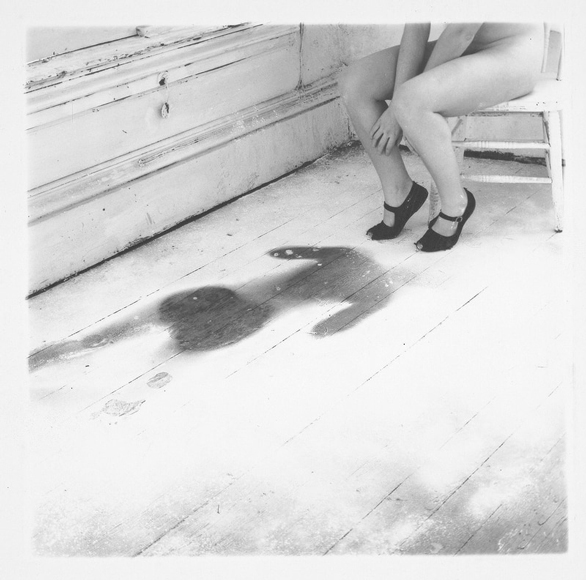
Francesca Woodman via Woodman Family Foundation
Still a practicing artist, Cindy Sherman’s approach to self-portraiture is more conceptual.
Challenging the traditional notions of beauty and femininity, her portraits are often caricature-like: exaggerated with sometimes distorted features (especially her latest Instagram series!).
For her most famous series Untitled Film Stills (1977-80), she produced highly stylised self-portraits resembling mid-20th century movies, focusing on stereotypical female characters.
If you’d like to act out different characters with plenty of satire for your images, Cindy’s work would be a great study subject for you.

Untitled Film Still #84, Cindy Sherman via WikiArt
The Digital Age
Yep, that’s us!
With our mobile phones in our pockets, we’ve all become photographers (though not everyone at a professional level), cameras at the ready to take pictures of our surroundings or ourselves.
Although there is a huge difference between the regular “selfies” we see hundreds of on a daily basis and fine art self-portraits, posing for our cameras is becoming second nature.
Unless you’re my husband. He hates taking a selfie.
While everyday selfies don’t usually fall under the artistic category, there are people who have taken an exception to this and created art out of their carefully curated collection.
Amalia Ulman is a present-day artist whose Excellences & Perfections project, documenting an “LA It girl” lifestyle, gained fame quickly on Instagram in 2014. It was later labelled as a sensation of contemporary art and shown at two major exhibitions in London.
All of the 175 photographs that Amalia took for this body of work were shared as a performance piece and were totally fake.
Her point was the superficiality of social media culture and the way in which women learn to present themselves online.

Amalia Ulman via amaliaulman.eu
Another notable photographer today is Juno Calypso, who is known for her cinematic self-portraits.
There’s a strong focus on colour (think pink!) in her pictures to bring across a dream-like quality while playing with themes of identity and loneliness.
Juno would go on eBay to find inspiration via search words that would fit into her make-believe world.
Inspiration really is everywhere!
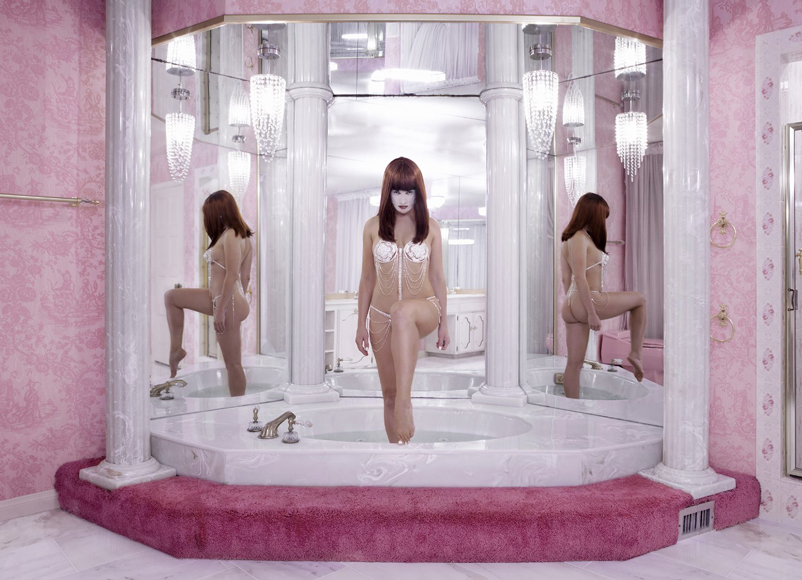
Juno Calypso via junocalypso.com
Building Your Visual Culture
It’s important to remember that self-portraiture is a form of self-expression. It’s a brave act that requires you to be true to who you are and your own artistic vision.
Studying the work and artistic voice of those who have come before you is beneficial to expand your visual culture and build that “bank” I talked about in 11 Tips for Capturing Authenticity in Self-Portrait Photography.
By acquainting yourself with the existing work of others, you will also:
- Start the creative juices flowing by seeing what’s possible both in terms of themes and set-up
- Motivate yourself to exercise the creative muscles in your brain and start shooting pictures
- Be able to see what you like and don’t like to eventually start building your own artistic voice
Don’t be afraid to take risks and push the boundaries of traditional self-portraiture to create more conceptual imagery, but do remember to stay honest with a focus on authenticity, rather than fixate on another artist’s work too much.
The Right Way To Create Self-Portraits
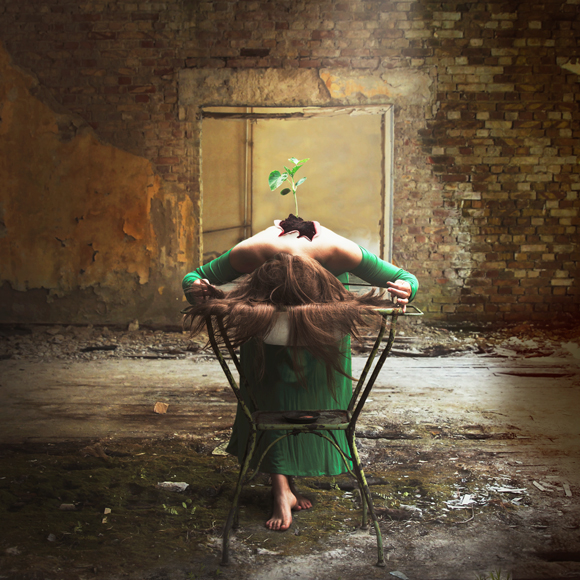
In decay she grew by Veronika Lavey
Trick title!
There is absolutely no right or wrong way to practice this genre of photography (or any art form for that matter!).
Overall, it’s an incredibly diverse medium, with a wide range of approaches and techniques, that can range from minimalist, to super stylised and theatrical images.
The only thing that has to remain constant is the principal subject matter – aka, you. The rest is up for experimentation.
Your imagination is the limit here and that you can expand and nurture by looking at what others have done before you, reading interviews with those artists, or listening to podcasts.
I find this incredibly motivating to do my own work!
The discussions don’t necessarily have to be specific to your genre. In fact, you will build up a more diverse language for your own art if you gather your inspiration from a variety of mediums.
Along your journey, you will read articles such as this one, you may pick up tips, ways of working, ideas for themes, etc., but while these can nudge you forward, ultimately the most important thing to remember in self-portrait photography is that it’s deeply personal.
At the heart of it all is your intention to purposefully produce imagery that will reflect your own unique perspective on your experiences in life.
Others will be able to relate, but nobody will have the exact same history as you.
This is what the photographers listed above have done well, and this is how you can feel like you’ve accomplished authenticity in your work.
I hope you enjoyed this post. If you want to get some ideas for creating conceptual fine art shoots using everyday items, check out my post, Creative Self-Portrait Photography on a Budget.

Check out these 8 essential tools to help you succeed as a professional photographer.
Includes limited-time discounts.
Veronika Lavey is a multi-cultural artist specialising in conceptual self-portraiture. She is recognised for her dark, thought-provoking fine art photography.
When Veronika doesn’t have a camera or a paint brush in her hands, she’s most likely walking her giant fluffy dog, Sonic in the woods, or hanging out with her family.





